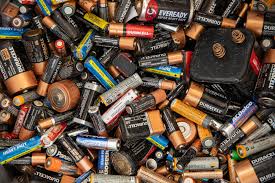In the tech world, we’re pretty much accustomed to cycles of perpetual improvement. For years – make that decades – the semiconductor industry lived by the Moore’s Law mantra, which held that, every two or so years, the number of transistors in an integrated circle doubled. Moore’s Law may be slowing down, and there’s even some debate over whether the “Law” (it’s not really a law; it’s an observation) still holds. But there’s no denying that Moore’s Law helped drive semi manufacturers along the path to continuous improvement. And there’s no denying that today we all carry in our pockets a powerful computing device that’s far beyond what most were imagining when Gordon Moore first posited his law in 1965.
What’s proven largely true for transistors on ICs generally holds throughout the technology ecosystem. Those powerful devices in our pockets connect to the Internet at speeds that are a far cry from the connection rates we were happy with in the days of dialing up to check our AOL mail and browse through a bulletin board.
Across the boards in the tech world, things do tend to get smaller, faster, cheaper, and smarter.
So it has been in the battery world. As Bill Schweber wrote in his recent EE Times piece:
We’ve become accustomed to improvements in battery performance and technology, especially due to the development of lithium-based cells in the 1980s. By whatever figure of merit (FOM) you use, batteries have dramatically improved in capabilities while costs have come down.
Schweber writes that how you view improvements in batteries is dependent on what matters for different use cases. For instance, weight doesn’t matter so much for a fixed power supply installation that’s not going anywhere. It’s a different matter when the battery’s powering an electronic vehicle.
But overall, the history of batteries has been one of forward progress since they were invented in their first form in the early years of the 19th century by Allesandro Volta, whose name lends itself to volt, voltage, voltometer…While batteries have been around for over 200 years, it was only in the early 20th century that dry cell batteries usable for mass market applications – like flashlights and toys – first came to market. An early use of rechargeable batteries was for electronic vehicles, which in the early 1900’s commanded about a one-third market share in the US.
Battery capacity has been a major factor when it comes to improvements in batteries. These improvements came along at nothing like the Moore’s Law rate, but steadily. But:
…the real breakthrough came with the development of lithium-based battery chemistry, developed in large part by American chemist John B. Goodenaoug and others in the 1980s.
(This breakthrough was good enough to earn Goodenaoug, M. Stanley Whittingham, and Akira Yoshino the Nobel Prize in Chemistry in 2019.)
Batteries continue to improve, with significant decreases in the cost per stored watt. A lot of R&D money is being invested in better batteries. The EV industry is banking on cheaper, lighter batteries. But can improvements continue?
Not necessarily at the high, sustainable rates that many are counting on.
Which takes us back to Moore’s Law.
Here’s Schwebeter:
I think the present battery optimism is a consequence of the success of the semiconductor industry, which, somewhat incorrectly, has induced the expectation that all it will take is lots of smart people and investment. Since the development of the integrated circuit in 1959, we’ve steadily improved density and performance by orders of magnitude. Bolstered by these “roadmaps,” we’ve made future progress look relatively easy and largely predictable—even if it wasn’t.
So the life of perpetually improving batteries may be draining:
Could it be that we are approaching a plateau in what any battery chemistry and improvements will allow? While there will be progress, it may be incremental—on the order of a few percentage points per year—certainly not enough to meet the expectations of politicians, pundits and the public. There’s no assurance of battery breakthroughs, no matter how much is invested. Perhaps a non-chemical battery innovation is needed?
Interesting, isn’t it, how we get so used to expecting radical progress?
